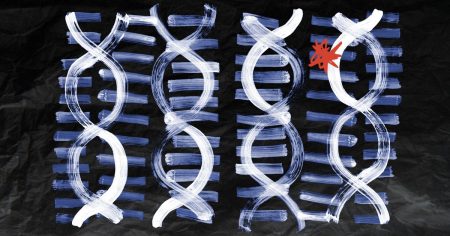Researchers have discovered a potential way to reverse age-related damage to liver cells in mice and human cell cultures. The study focused on ferroptosis, a form of iron-dependent cell death that affects liver cells known as hepatocytes. It was found that gene clusters associated with this process exist in both mice and humans, raising the possibility of pharmaceutical interventions to reverse aging in affected liver cells. The study also found that age-related genes causing ferroptosis are linked to other diseases such as heart, kidney, and pancreatic damage.
The main focus of the study was on nonalcoholic fatty liver disease (NAFLD), also known as metabolic dysfunction-associated steatotic liver disease (MASLD), which can lead to cirrhosis and organ failure. Researchers identified a cluster of genes affecting cell aging in mice and confirmed the same genetic signature in human cells from individuals with obesity and NAFLD/MASLD. By inducing NAFLD/MASLD in mice and testing the effects of the drug Ferrostatin-1, they found that liver cells in older mice injected with the drug appeared young and healthy at the end of the study, indicating a potential therapeutic benefit.
The authors of the study hope that their findings will lead to new therapies for NAFLD/MASLD and other age-related diseases affecting various organ systems. The lead researcher, Anna Mae Diehl, stated that aging can be partially reversed and that reducing age-related stress can improve liver health. The study suggests that the molecular pathways of ferroptosis offer potential targets for therapeutic interventions, although further research is needed to fully understand the implications of inducing or inhibiting ferroptosis in liver diseases.
NAFLD/MASLD is a common liver disease affecting a significant portion of the global population, including children. Symptoms may include fatigue, weakness, abdominal pain, and unexplained weight loss, with some children experiencing additional symptoms such as liver enlargement and skin discoloration. Diagnosis often relies on blood tests that may not always detect the condition, leading to incidental discovery during medical imaging procedures. While there is no direct treatment for NAFLD/MASLD, maintaining a healthy diet and weight can help slow its progression.
In conclusion, the study highlights the potential for reversing age-related liver damage through targeting ferroptosis and gene clusters associated with aging in liver cells. The findings offer hope for developing new therapies for NAFLD/MASLD and other diseases linked to aging and cell death. Further research into the molecular mechanisms of ferroptosis and its implications in liver diseases is needed to fully understand the therapeutic potential of this approach. With ongoing advancements in biomedical research, there is optimism for improving outcomes for individuals with liver diseases and age-related conditions.













